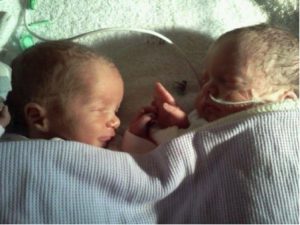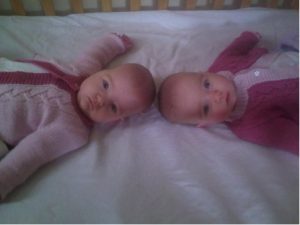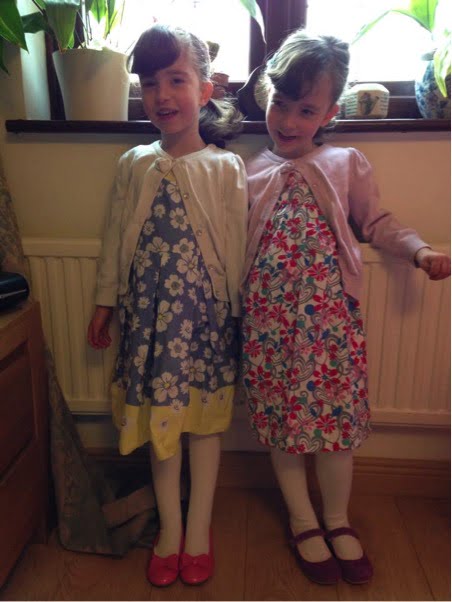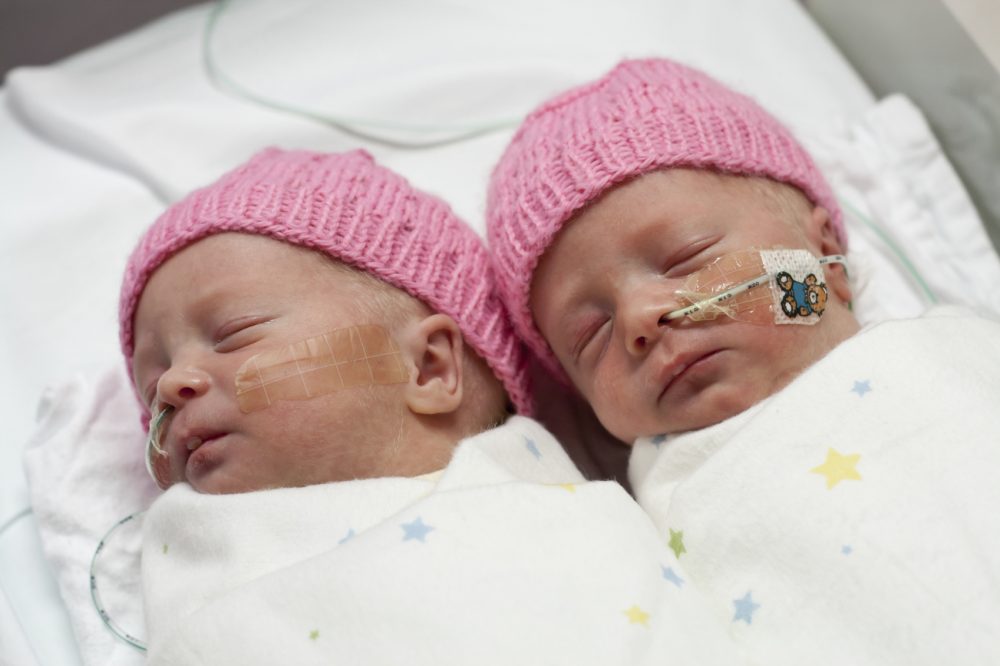
Anna Sutherland, Palliative medicine doctor, and mother of twins, looks at Cochrane evidenceCochrane Reviews are systematic reviews. In systematic reviews we search for and summarize studies that answer a specific research question (e.g. is paracetamol effective and safe for treating back pain?). The studies are identified, assessed, and summarized by using a systematic and predefined approach. They inform recommendations for healthcare and research. on whether co-bedding for stable premature twins has any effect on their development and wellbeing.
Page last checked 25 August 2022
When our identical twin girls were born at 32 weeks one of the things that bothered me the most was that they had to be in separate cots in special care. As soon as they were medically well enough, I asked for them to be nursed in one cot side by side. It was maternal instinct that made me ask, rather than any particular evidence I had read. The sight of them in separate cots after months of being so close together just felt wrong.
One of the first things that happened was that they felt for each other’s hands. From then on I never felt anxious leaving them in the evening because I knew they had each other.
Can evidence tell us if twins do better in one cot?
Given that a mother’s instinct and worries about separation isn’t very scientific, a Cochrane ReviewCochrane Reviews are systematic reviews. In systematic reviews we search for and summarize studies that answer a specific research question (e.g. is paracetamol effective and safe for treating back pain?). The studies are identified, assessed, and summarized by using a systematic and predefined approach. They inform recommendations for healthcare and research. recently studied whether putting premature twins in the same cot actually improves how well they do in a review called “Co-bedding in neonatal nursery for promoting growth and neurodevelopment in stable preterm twins” (published April 2016).
Although the trialsClinical trials are research studies involving people who use healthcare services. They often compare a new or different treatment with the best treatment currently available. This is to test whether the new or different treatment is safe, effective and any better than what is currently used. No matter how promising a new treatment may appear during tests in a laboratory, it must go through clinical trials before its benefits and risks can really be known. were too small and there were too few of them either to support sleeping preterm twins in the same cot or suggest that this was a harmful thing to do, they did find some interesting things.
They found no difference between twins cared for together or in separate cots for:
- Speed of weight gain
- Number of episodes of breath holding, low heart rateThe speed or frequency of occurrence of an event, usually expressed with respect to time. For instance, a mortality rate might be the number of deaths per year, per 100,000 people. and low oxygen levels
- Number of times when the twins seemed be aware of each other and respond – like touching, holding and hugging
- Number of infections
- How long the twins stayed in hospital
- How satisfied the parents were

They also checked to see what happened when the twins had their heel prick blood tests taken. I think we all know the answer to that one, don’t we? Yeah, they scream! But they found that twins who shared a cot showed fewer signs of pain 30 seconds after but more signs of pain 90 seconds after. Researchers haven’t been able to explain why this is yet, so we are left to guess. I’m sure any twins’ mum or dad would guess that this might be because the chilled out twins at the start suddenly realise what has just happened and most likely both start screaming by the 90 second point, making everyone that bit more stressed!
Where does that leave us?
So although we still don’t know if twins born prematurely should be looked after in one cot or separate cots, and we need more research to be able to say either way, I know what I would want if I had premature twins again.
I’d want to be asked. And if I was, I would still want them to share a cot.
Our twins shared a bed until they were four and a half, actually they still do if one is upset or ill, and it hasn’t done them any harm as far as I can tell!

Anna Sutherland is Cochrane UK Fellow. Anna has no other conflicts of interest to declare.



If there is no harm in co bedding twins. I say why not do that. Science can’t prove love. We know it real. I say them be together at least they can share their love
Great review Anna. New fan of everything Cochrane…and a twin. My prejudice, that twins co-sleeping would do better is not true. Despite the social folklore the evidence suggests no benefit…so another old wives tale bites the dust.
Huxley said: ‘the tragedy of science, the slaying of a beautiful hypothesis by an ugly fact.’
Thank you Will. I think at the moment there isn’t enough evidence to slay the hypothesis just yet!